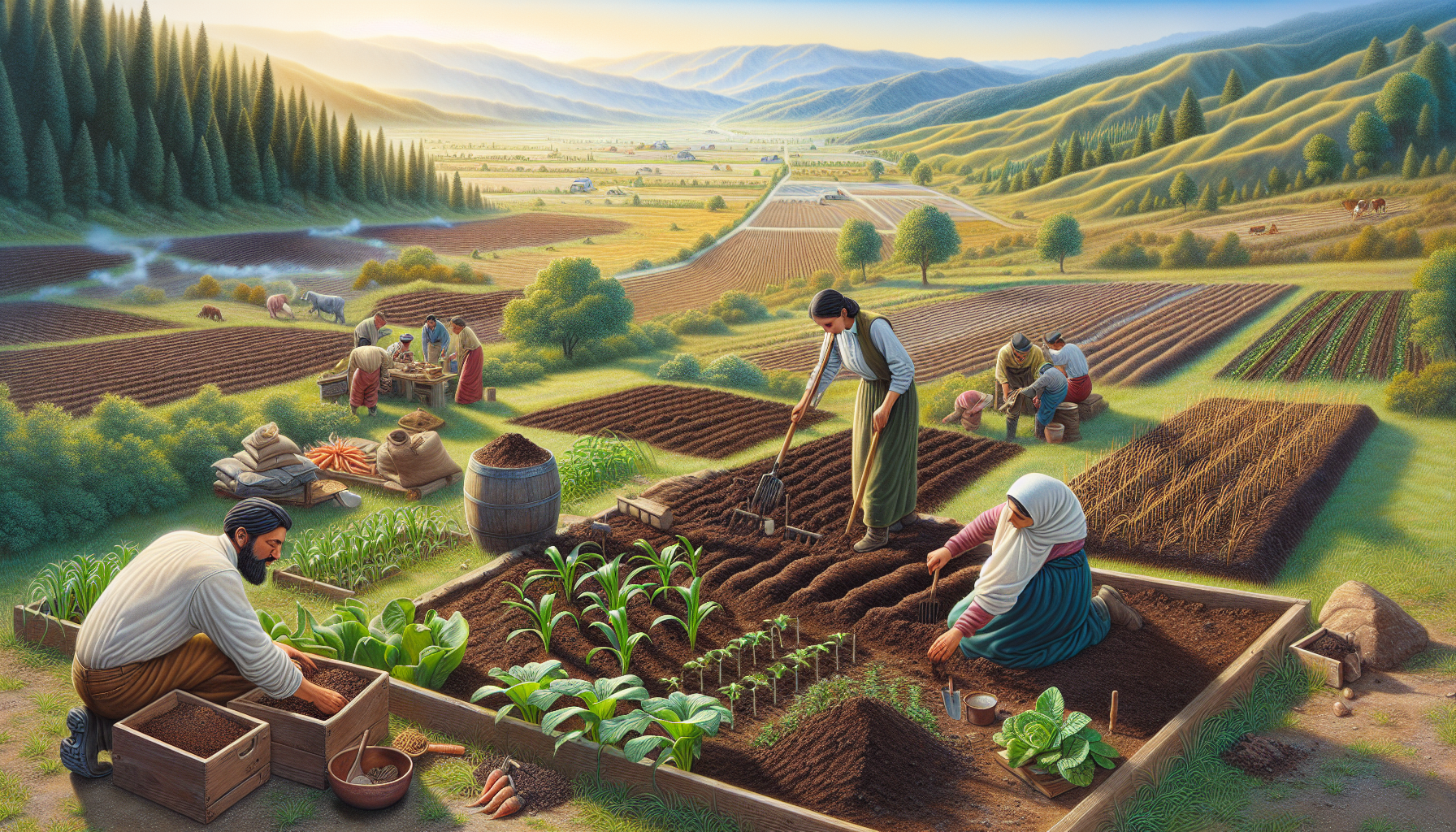Soil Regeneration Techniques for Small Farms
Introduction to Soil Regeneration
Soil regeneration is a vital practice for small farms, aiming to restore and enhance the health of the soil. This process not only improves crop yield but also contributes to sustainable farming practices. By focusing on soil regeneration, small farmers can ensure their land remains productive for future generations. In this article, we’ll explore various techniques that can be implemented on small farms to rejuvenate the soil, drawing from both traditional wisdom and modern science.
Understanding Soil Health
Before diving into the techniques, it’s crucial to understand what constitutes healthy soil. Healthy soil is rich in organic matter, has a balanced pH, and supports a diverse ecosystem of microorganisms. These elements work together to provide nutrients to plants, retain moisture, and improve soil structure. A USDA report on soil health highlights that soil health is the foundation of productive, sustainable agriculture.
Technique 1: Cover Cropping
Cover cropping is one of the most effective soil regeneration techniques for small farms. By planting cover crops like clover, rye, or legumes during off-seasons, farmers can protect the soil from erosion, improve its structure, and increase organic matter. Cover crops also help in fixing nitrogen in the soil, which is essential for plant growth. For instance, legumes such as peas and beans can convert atmospheric nitrogen into a form that plants can use, enriching the soil naturally.
Technique 2: Composting
Composting is another cornerstone of soil regeneration. By turning organic waste into nutrient-rich compost, farmers can significantly enhance soil fertility. Compost improves soil structure, increases its water-holding capacity, and provides a slow-release source of nutrients. Small farms can create compost from kitchen scraps, yard waste, and animal manure. A study by the Journal of Environmental Management found that compost application can lead to substantial improvements in soil health and crop productivity.
Technique 3: Crop Rotation
Crop rotation is a time-tested method that helps in soil regeneration by preventing the depletion of specific nutrients. By rotating crops, farmers can break pest and disease cycles, improve soil structure, and maintain soil fertility. For example, rotating nitrogen-fixing crops like legumes with nutrient-demanding crops like corn can help balance the soil’s nutrient profile. This practice not only regenerates the soil but also reduces the need for chemical fertilizers.
Technique 4: No-Till Farming
No-till farming is a technique that minimizes soil disturbance, preserving its structure and reducing erosion. By avoiding plowing, farmers can maintain the soil’s natural ecosystem, including beneficial microorganisms and earthworms. No-till farming also helps in retaining moisture and reducing the need for irrigation. According to a study on no-till farming, this method can significantly improve soil health and increase carbon sequestration.
Technique 5: Agroforestry
Agroforestry integrates trees into farming systems, offering multiple benefits for soil regeneration. Trees can help in reducing soil erosion, improving water retention, and enhancing biodiversity. They also contribute to the soil’s organic matter through leaf litter and root systems. Small farms can incorporate agroforestry by planting fruit or nut trees alongside crops, creating a more resilient and sustainable farming system.
Implementing Soil Regeneration Techniques
Implementing these soil regeneration techniques on small farms requires careful planning and adaptation to local conditions. Here’s a simple table to help farmers decide which techniques might be most suitable for their specific needs:
| Technique | Benefits | Considerations |
| Cover Cropping | Prevents erosion, improves soil structure, fixes nitrogen | Requires planning for off-season planting |
| Composting | Enhances fertility, improves water retention | Needs space and time for composting process |
| Crop Rotation | Balances nutrients, breaks pest cycles | Requires knowledge of crop nutrient needs |
| No-Till Farming | Preserves soil structure, reduces erosion | May require specialized equipment |
| Agroforestry | Reduces erosion, enhances biodiversity | Long-term investment, requires space |
By choosing the right combination of these techniques, small farmers can create a tailored approach to soil regeneration that suits their specific circumstances. Whether it’s the immediate benefits of composting or the long-term advantages of agroforestry, each method contributes to a healthier, more sustainable farm.
Conclusion
Soil regeneration is not just a practice but a commitment to the future of farming. For small farms, adopting these techniques can lead to improved soil health, increased crop yields, and a more sustainable operation. By understanding the principles of soil health and implementing the right regeneration techniques, small farmers can play a crucial role in preserving our planet’s most valuable resource: the soil.

